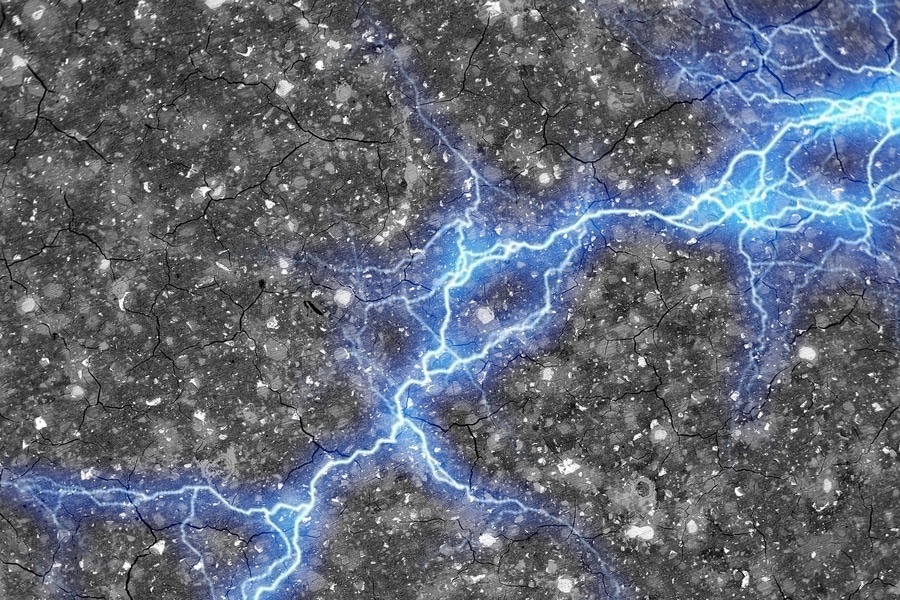In a groundbreaking exploration of innovative energy storage solutions, researchers at MIT have unveiled a remarkable revelation: the potential of harnessing two ubiquitous man-made materials, cement and carbon black. This dynamic duo holds the key to unlocking a revolutionary and cost-effective energy storage system, paving the way for a future where sustainable power is harnessed through ingenious means.

Image Credit: Courtesy of the Researchers | MIT
The team published their findings in the journal PNAS, revealing that combining cement and carbon black with water can produce a supercapacitor capable of storing electrical energy. This article will delve further into the teams' exciting findings and the implications of this transformative discovery, shedding light on the fusion of science and practicality that could reshape the energy landscape.
Cement-Based Supercapacitors
In the realm of energy storage, supercapacitors stand as remarkable electrochemical systems that combine high power densities and remarkable energy release efficiency.
Like standard capacitors, supercapacitors consist of two electrically conductive plates separated by a membrane when set within an electrolyte. Typically, these conductive plates are what drive the power-storing capabilities of both capacitors and supercapacitors, as each of these plates maintains a charge for a prolonged period of time which can be released when required.
What makes the new supercapacitor developed by the MIT team unique is the fact the cement-based carbon black material has an exceptionally high surface area due to its density.
To produce such a dense material, the team experimented by adding carbon black, a well-known conductor, into a concrete mixture with water. Once the ingredients were combined, they then let the mix cure. The introduction of water then encouraged the natural formation of a porous rhizomatic network throughout the structure as it reacted with the cement. The carbon black then moved into these spaces to create wire-like structures as the cement set.
This revolutionary achievement bears the promise of redefining energy storage paradigms, opening pathways to sustainable and efficient power solutions.
Multifunctionality for the Future
MIT's supercapacitor, made from carbon-black concrete, boasts remarkable energy storage capacity and impressive high-discharge rate capabilities, all while demonstrating self-similarity. This remarkable material ushers in a realm of possibilities, ranging from roadways primed for electric vehicle charging to the creation of energy-efficient residences and self-sustaining shelters.
As outlined in the research, utilizing approximately 45 cubic meters of carbon-black-infused concrete enables the storage of roughly 10 kilowatt-hours of energy, equivalent to the average US daily household consumption.1
However, augmenting the material’s energy storage capacity can have an impact on the structural robustness of the material. While this would be of little concern in an application that does not necessitate robust structural integrity, the team discovered that a mix containing 10 percent carbon black was the “sweet spot” if the material was to be used as the foundation in a building or the structural parts of a wind turbine.1
Besides its ability to store energy, the same concrete mixture can be used as a heating system by simply applying electricity to the carbon-laced concrete. The MIT team is also confident in the scalability of the material, given the fact the energy-storage capacity is related to the volume of electrodes in any given configuration.
You can go from 1-millimeter-thick electrodes to 1-meter-thick electrodes, and by doing so basically you can scale the energy storage capacity from lighting an LED for a few seconds, to powering a whole house.
Franz-Josef Ulm, MIT Professor
Conclusion
As the realm of energy storage continues to evolve, the breakthrough discovery of cement-based supercapacitors showcases the transformative power of innovation. This discovery not only promises to reshape our energy landscape but also invites individuals, communities, and industries to actively participate in the transition towards a more sustainable future, offering “a new way of looking toward the future of concrete as part of the energy transition.”2
References and Further Reading
- Chanut, N. et al. (2023) ‘Carbon–cement supercapacitors as a scalable bulk energy storage solution’, Proceedings of the National Academy of Sciences, 120(32). Available at: https://www.pnas.org/doi/10.1073/pnas.2304318120.
- Chandler, D. (2023) MIT engineers create an energy-storing supercapacitor from ancient materials, MIT News | Massachusetts Institute of Technology. Available at: https://news.mit.edu/2023/mit-engineers-create-supercapacitor-ancient-materials-0731
Disclaimer: The views expressed here are those of the author expressed in their private capacity and do not necessarily represent the views of AZoM.com Limited T/A AZoNetwork the owner and operator of this website. This disclaimer forms part of the Terms and conditions of use of this website.